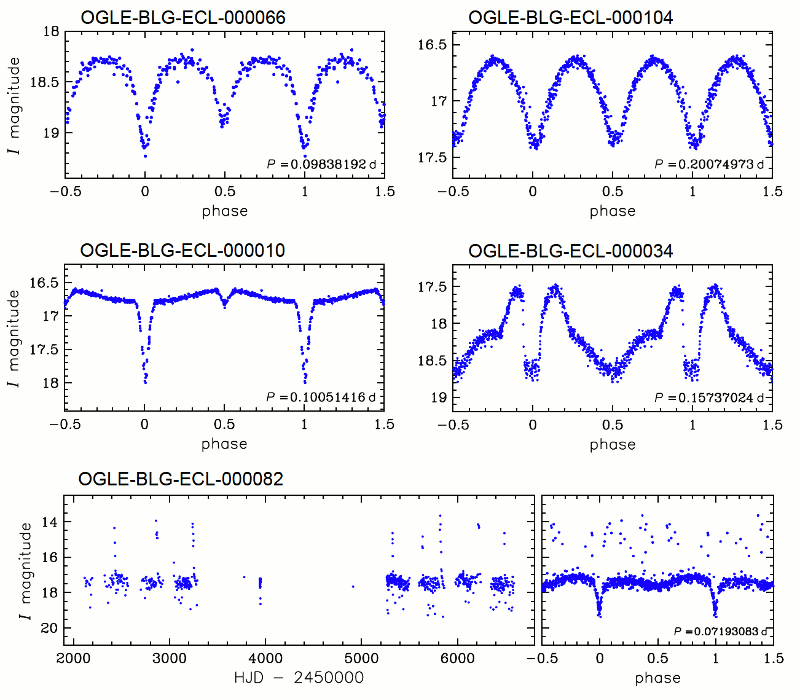Ultra-Short-Period Binary Systems in the OGLE Fields Toward the Galactic Bulge
Acta Astronomica, 65, ... (arXiv:1503.02080)
We present a sample of 242 ultra-short-period (P < 0.22 d) eclipsing and ellipsoidal binary stars identified in the OGLE fields toward the Galactic bulge. Based on the light curve morphology, we divide the sample into candidates for contact binaries and non-contact binaries. In the latter group we distinguish binary systems consisting of a cool main-sequence star and a B-type subdwarf (HW Vir stars) and candidates for cataclysmic variables, including five eclipsing dwarf novae. One of the detected eclipsing binary systems - OGLE-BLG-ECL-000066 - with the orbital period below 0.1 d, likely consists of M dwarfs in a nearly contact configuration. If confirmed, this would be the shortest-period M-dwarf binary system currently known. We discuss possible evolutionary mechanisms that could lead to the orbital period below 0.1 d in an M-dwarf binary.

The list of ultra-short-period binary systems, their photometry and finding charts are available from the OGLE Internet Archive.
PLEASE cite the following paper when using the data or referring to these OGLE results:
Soszyński et al., 2015, Acta Astronomica, 65, 39 (arXiv:1503.02080)
Any comments about the data and the form of their presentation are welcome as they can improve the future releases of OGLE analysis. Send your messages to this address.
 back
back